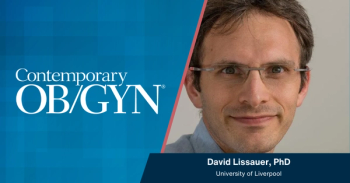
Neighborhood disadvantage and fertility rates
Residing in a socioeconomically disadvantaged neighborhood was linked to moderately decreased fecundability, according to a study published in JAMA Network Open.
“A body of literature shows associations between neighborhood socioeconomic context and health outcomes,” said first author Mary Willis, PhD, MPH, a postdoctoral research scholar in environmental epidemiology at Oregon State University in Corvallis. “Dozens of studies examine health outcomes related to birth and asthma, for example. However, the world of fertility research is largely focused on individual-level interventions, mainly healthy eating or exercise, as opposed to structural-level interventions that may influence fertility for an entire population.”
The study is the first to directly examine fecundabilty, the per-cycle probability of conception, with respect to neighborhood deprivation, according to Willis. “We do not know what factors in the neighborhood environment may be most important for fecundability,” she told Contemporary OB/GYN. “Our team hypothesized that it could be anything from crime levels to community poverty to green space access.”
The prospective preconception cohort study, which used baseline data from the Pregnancy Study Online, comprised 6,356 participants, aged 21 to 45 (mean baseline age 30.0 years), who were attempting conception without fertility treatment.
Overall, 83.3% of the participants were non-Hispanic White and 65.7% nulliparous.
Questionnaires were completed every 8 weeks for 12 months, until conception or a censoring event, between 2013 and April 2019.
A total of 3,725 pregnancies were reported for 27,427 menstrual cycles of follow-up.
Comparing the top decile to the bottom decile of disadvantaged neighborhood status, adjusted fecundability ratios were 0.79 (95% confidence interval [CI]: 0.66 to 0.96) for national-level area deprivation index (ADI) rankings and 0.77 (95% CI: 0.65 to 0.92) for within-state ADI rankings.
These connections were slightly stronger among participants with lower annual incomes of less than $50,000.
Willis noted that neighborhood context, including a socioeconomically disadvantaged neighborhood environment, “is a complex phenomenon that encompasses a variety of chronic stress exposure pathways.”
Public policies that influence decisions about neighborhood investment, as well as disinvestment like redlining, “may perpetuate a cycle of chronic stress and continued neighborhood socioeconomic disadvantage,” Willis said. “For instance, higher neighborhood unemployment has been associated with decreased population-level fertility rates.”
Likewise, less affluent areas often have higher concentrations of air pollution, resulting in adverse fertility outcomes.
“In addition, less affluent areas may have fewer amenities, such as green spaces, to restore capacity in residents to reduce stress,” Willis said.
By contrast, urban renewal programs demonstrate positive health benefits for local populations.
“Both income and educational attainment may be influenced by neighborhood disadvantage earlier in life; therefore, they are potential mediators of the exposure-outcome association,” Willis said. “However, our study examined neighborhood disadvantage in adulthood.”
If people are socially immobile, there would likely be similar ADI levels over time, “so we could argue that educational attainment and income in adulthood are mediators,” Willis said. “On the other hand, if we assume a noteworthy change in neighborhood context with the transition from adolescence to adulthood, it is more probable that these socioeconomic attributes, along with race and ethnicity, influence the neighborhoods in which people live as adults, although these residential locations may not be by choice.”
Therefore, adjusting for individual socioeconomic factors depends largely on the conceptual framework. “Disentangling the influence of individual versus neighborhood factors may not be possible,” Willis said. “Nonetheless, if our results can be confirmed by other studies, I hope it will inspire clinicians to think about fertility in a structural context.”
- Willis MD, Orta OR, Ncube C, et al. Association between neighborhood disadvantage and fertility among pregnancy planners in the US. JAMA Netw Open. Published online June 30, 2022. doi:10.1001/jamanetworkopen.2022.18738
Newsletter
Get the latest clinical updates, case studies, and expert commentary in obstetric and gynecologic care. Sign up now to stay informed.











